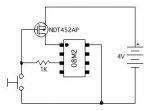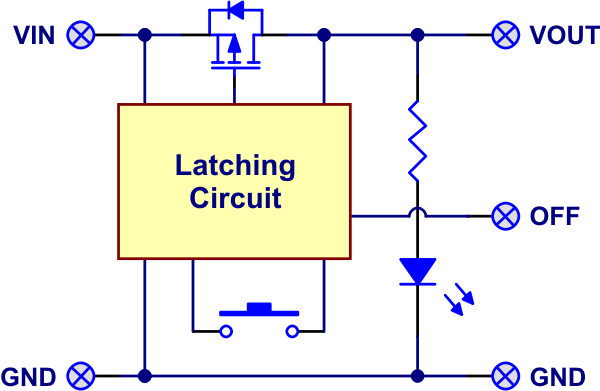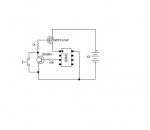TinkerJim
Member
The following circuit was intended to switch on a Picaxe through a p-channel Mosfet by momentarily depressing a button.

The first step of the program is "Low 4" which then keeps power on (the gate of the Mosfet being held low). That part works fine.
After the program runs down to its next to the last step, it was supposed to turn itself off by making the gate pin high as its last step.
Then no energy would be consumed until the momentary switch was depressed. But that part doesn't work as intended!
After the program executes the final line (High 4) current falls not to zero, but about 15 uA. And this is the exact same current draw that the 08M2 draws when powered directly from the battery and sitting idle (i.e. finished running a program)
Also tried a 100K pull up to the gate. And also tried an n-channel on the other side of the MC. No luck.
Any help would be appreciated.

The first step of the program is "Low 4" which then keeps power on (the gate of the Mosfet being held low). That part works fine.
After the program runs down to its next to the last step, it was supposed to turn itself off by making the gate pin high as its last step.
Then no energy would be consumed until the momentary switch was depressed. But that part doesn't work as intended!
After the program executes the final line (High 4) current falls not to zero, but about 15 uA. And this is the exact same current draw that the 08M2 draws when powered directly from the battery and sitting idle (i.e. finished running a program)
Also tried a 100K pull up to the gate. And also tried an n-channel on the other side of the MC. No luck.
Any help would be appreciated.




